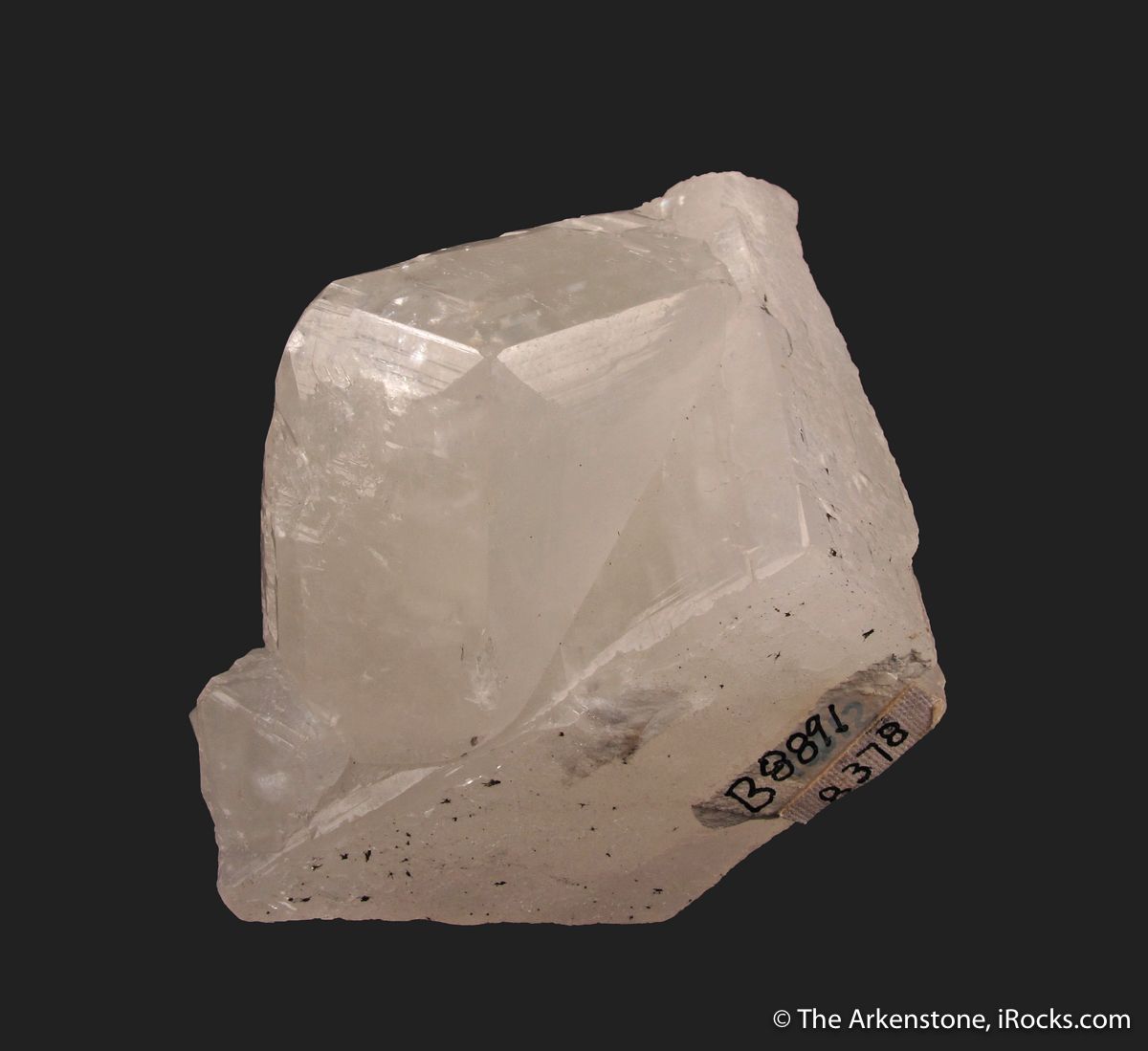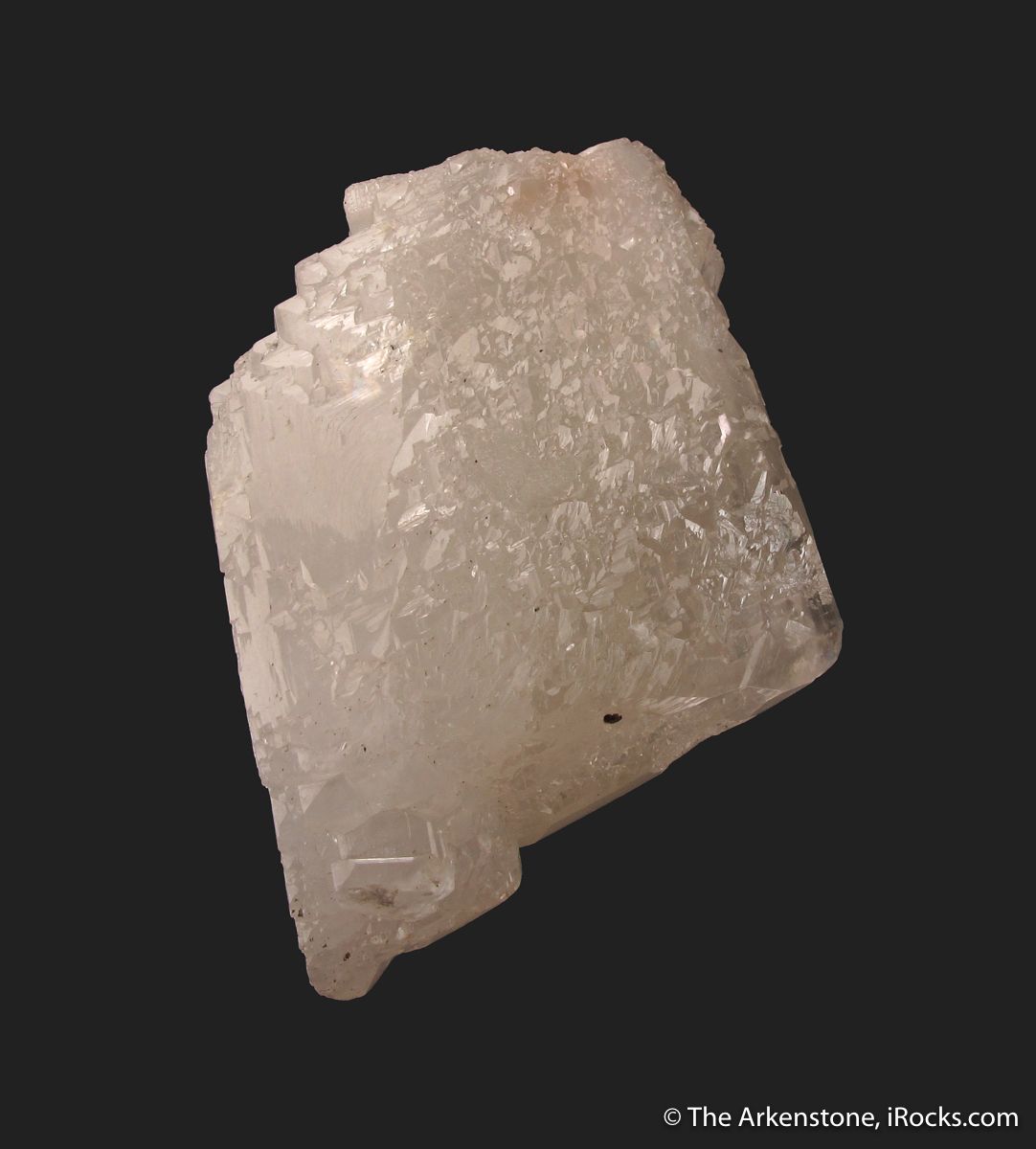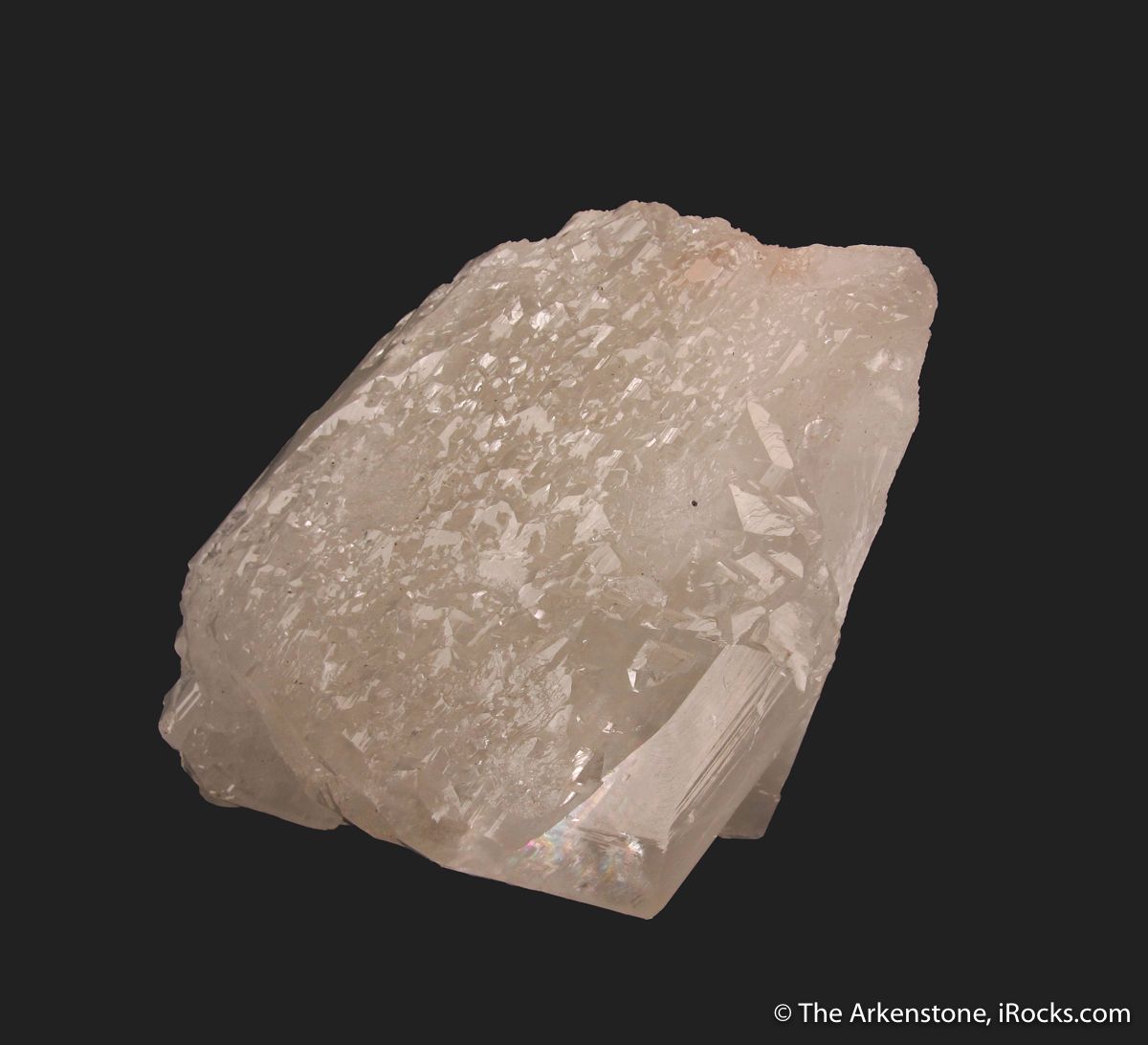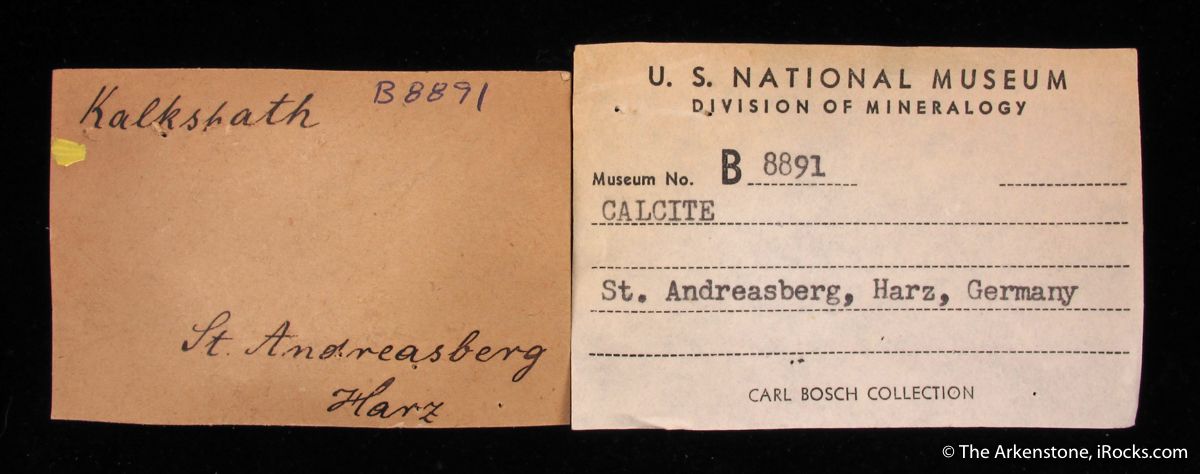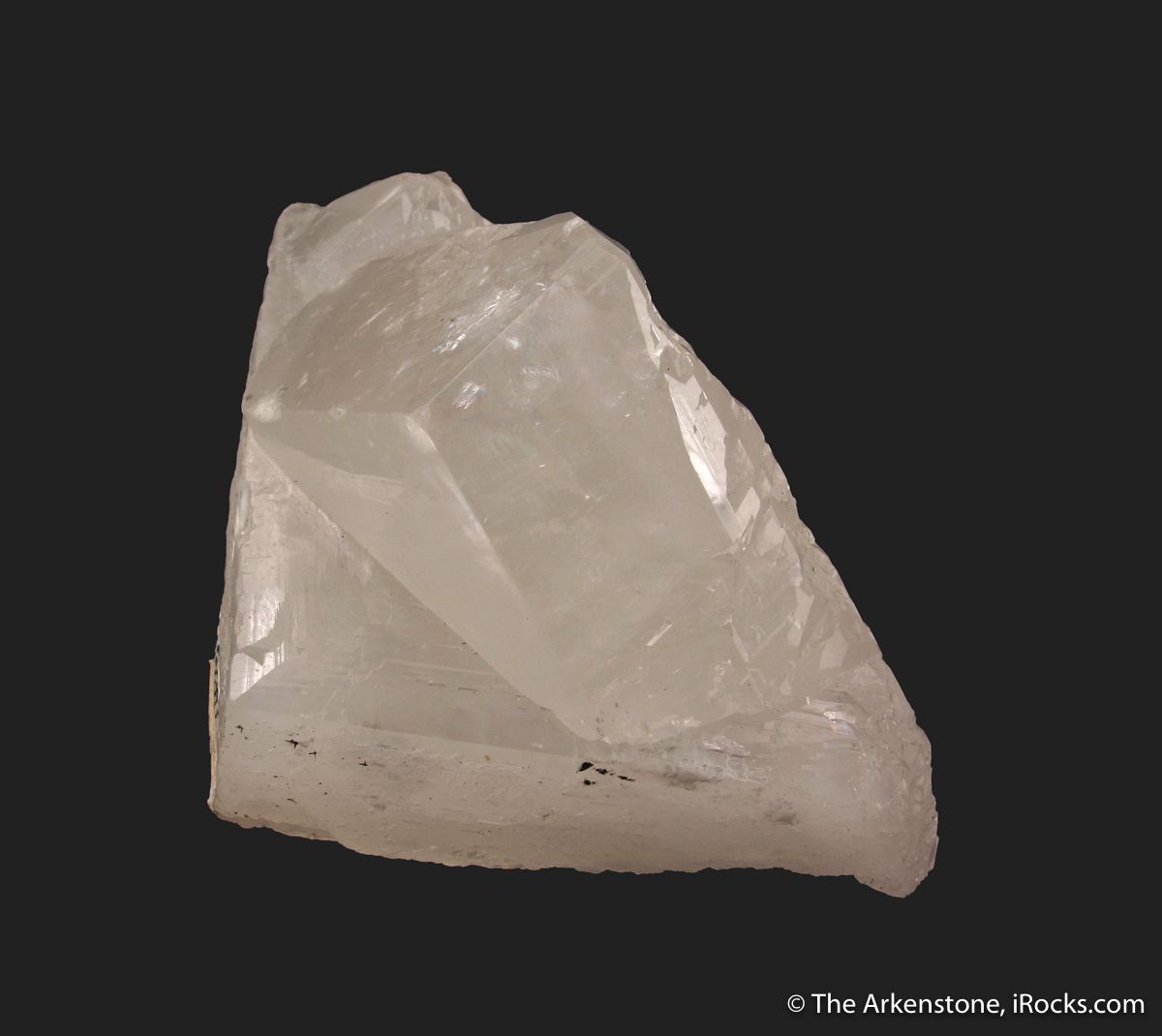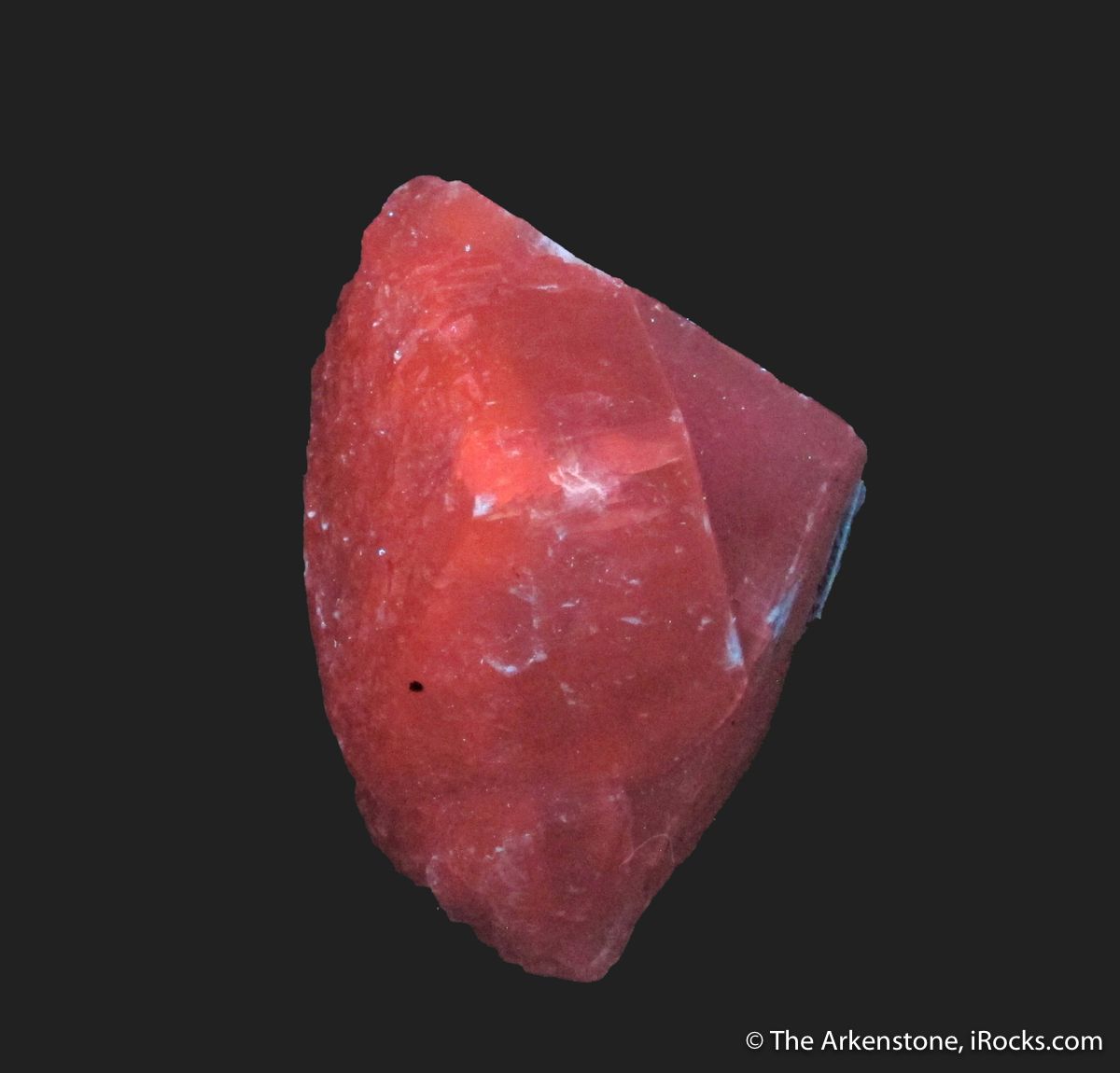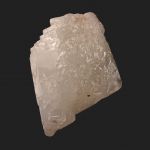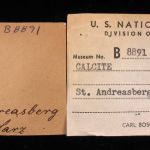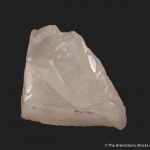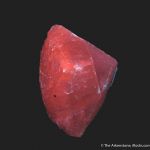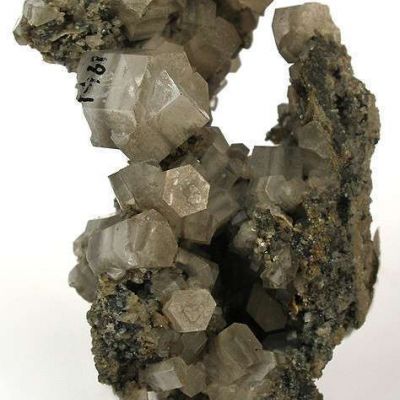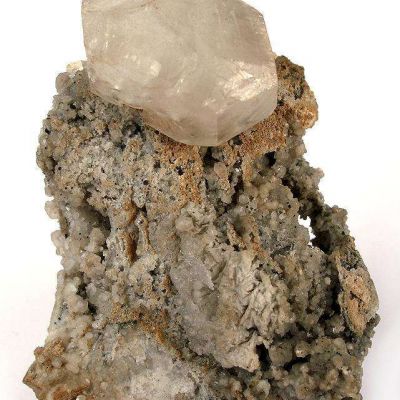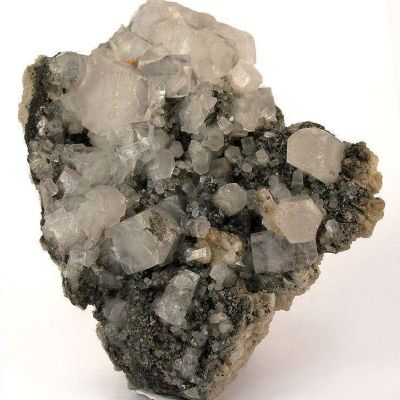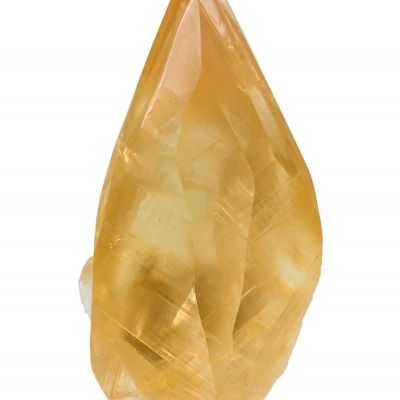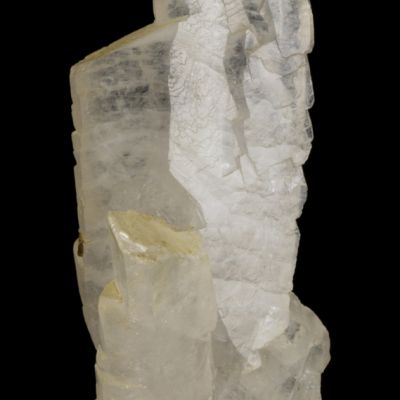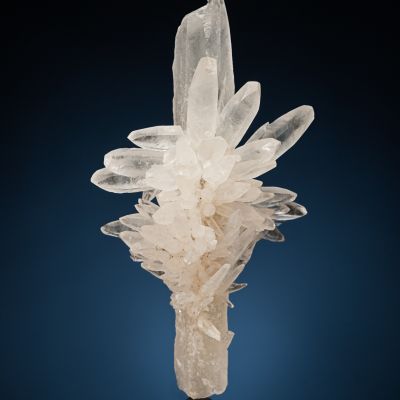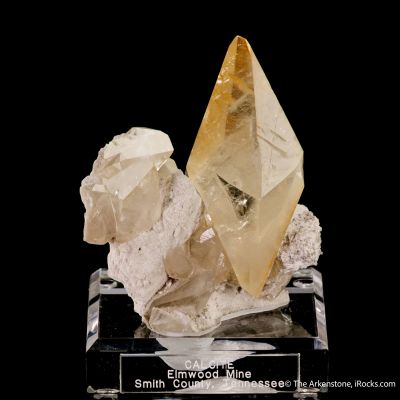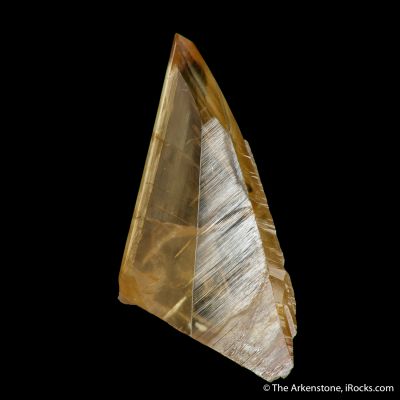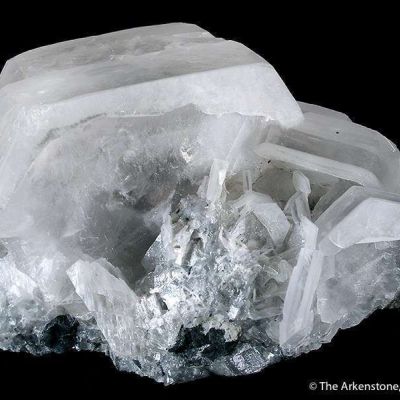- KRE-35
- Calcite (fluorescent and twinned)
- St Andreasberg, St Andreasberg District, Harz, Lower Saxony, Germany
- Small Cabinet, 7.2 x 4.9 x 4.5 cm
- Ex. Carl Bosch; Smithsonian Institution; Kay Robertson
- SOLD
Lustrous and attractive classic from the mid to late 1800s, these ivory-colored, interpenetrating Calcite rhombs are from the classic and historic St. Andreasberg. The faces are slightly modified, and have super-fine striations that enhance the glassy luster. As old as this piece is, it is fortunate that there is only slight bruising on this fine small cabinet specimen. it displays well, with the interesting ancient numbering showing as an accent. The provenance is outstanding: Carl Bosch (1874-1940) to the Smithsonian to Kay. Orange fluorescence is a rare bonus! See for more info: https://mineralogicalrecord.com/labels.asp?colid=205 - Dr. Carl Bosch was born in Cologne, Germany on August 27, 1874, the eldest son of a south German engineer. He did well in science at school, and before going to college spent a year working as a metal fabricator. He then studied chemistry under J. A. Wislicenus at Leipzig University, where he took his doctorate in 1898. He then took a job with Badische Anilin-und-Soda-Fabrik (BASF), a large German chemical company making dyestuffs. In 1908 Fritz Haber told BASF of his ammonia synthesis process, and Bosch was assigned the task of developing it on an industrial scale. By the end of 1913 he had completed the monumental job, the largest single undertaking in the history of chemical engineering. He was awarded the Nobel Prize in Chemistry in 1931 for his work on high-pressure synthesis.
